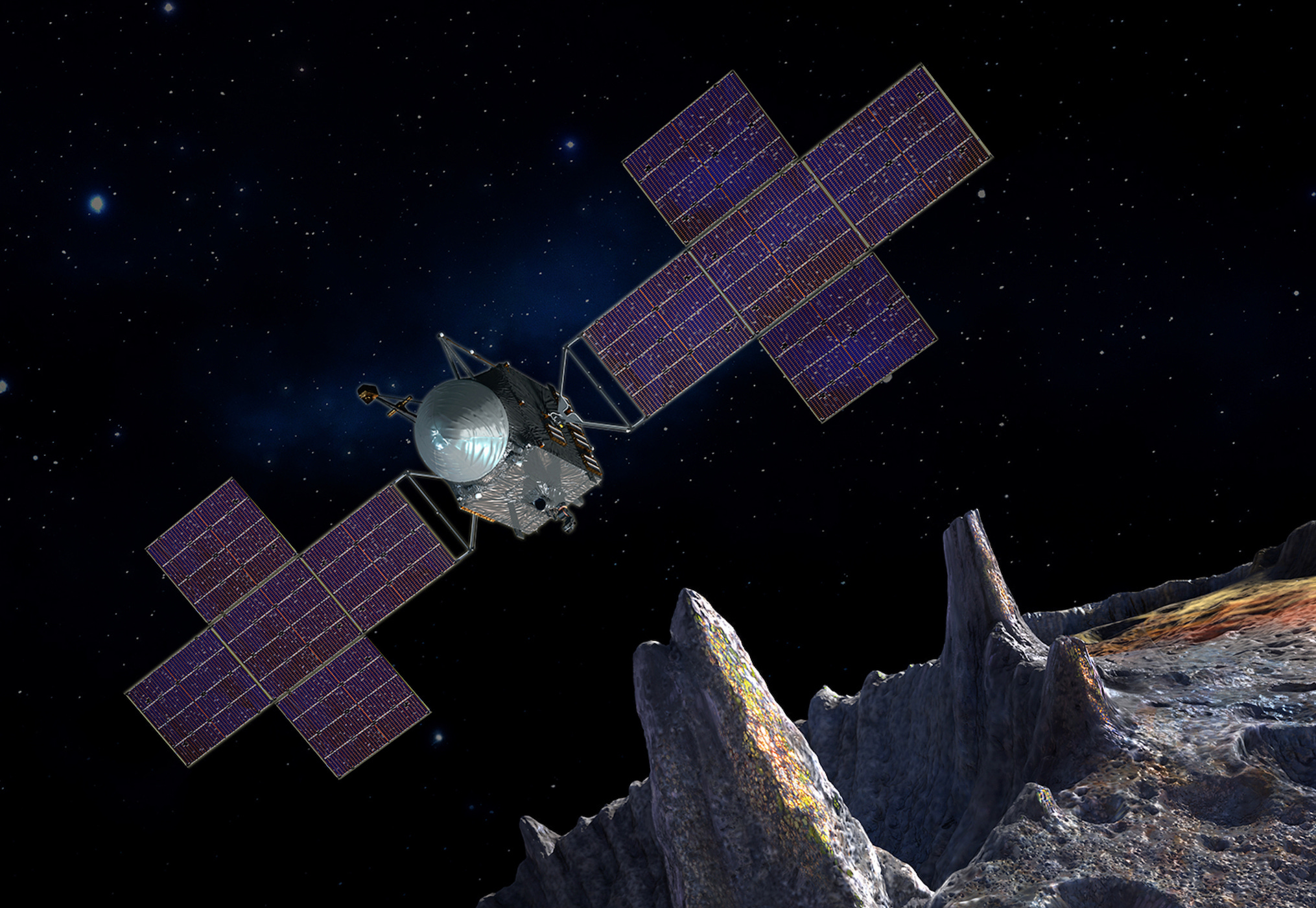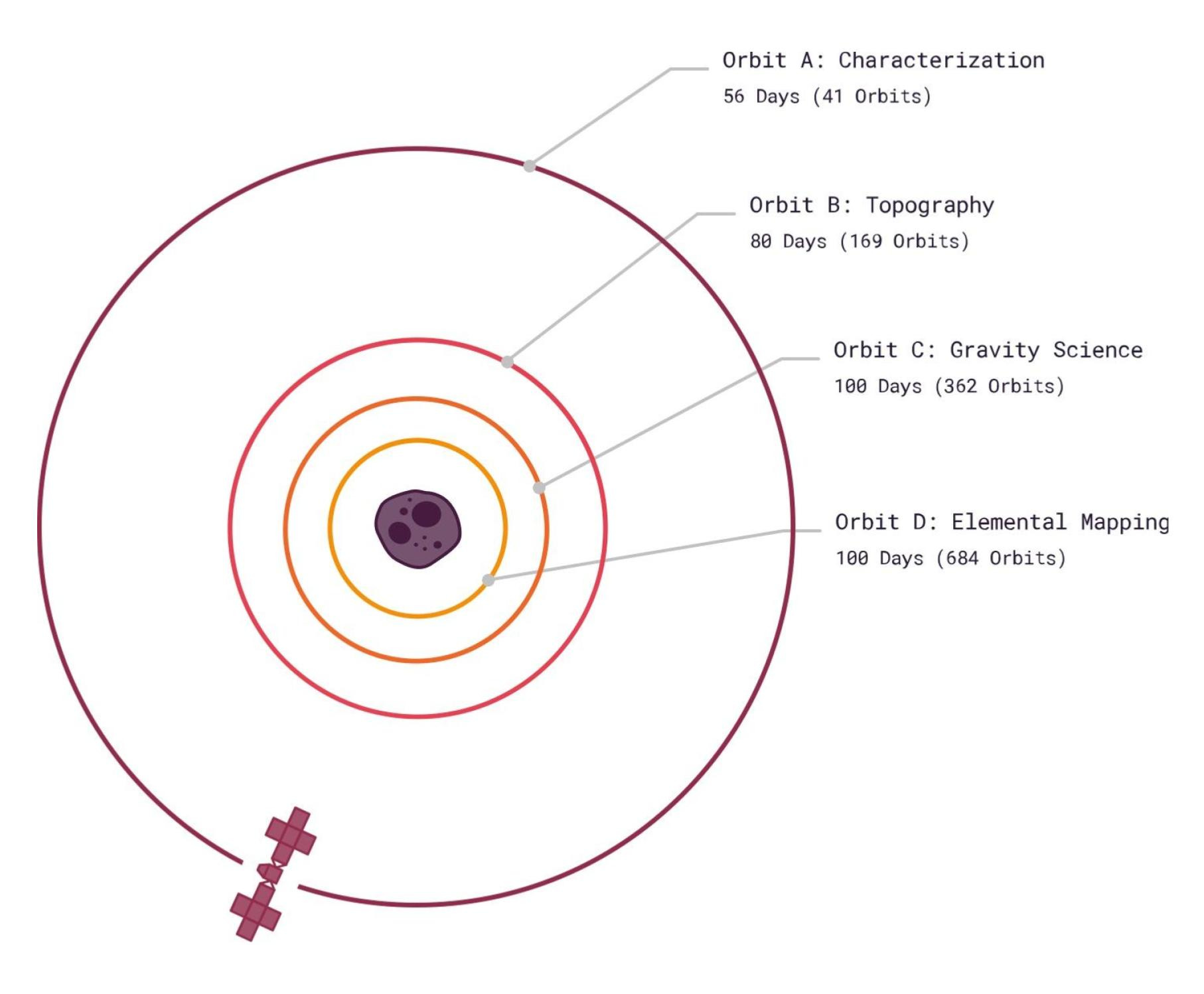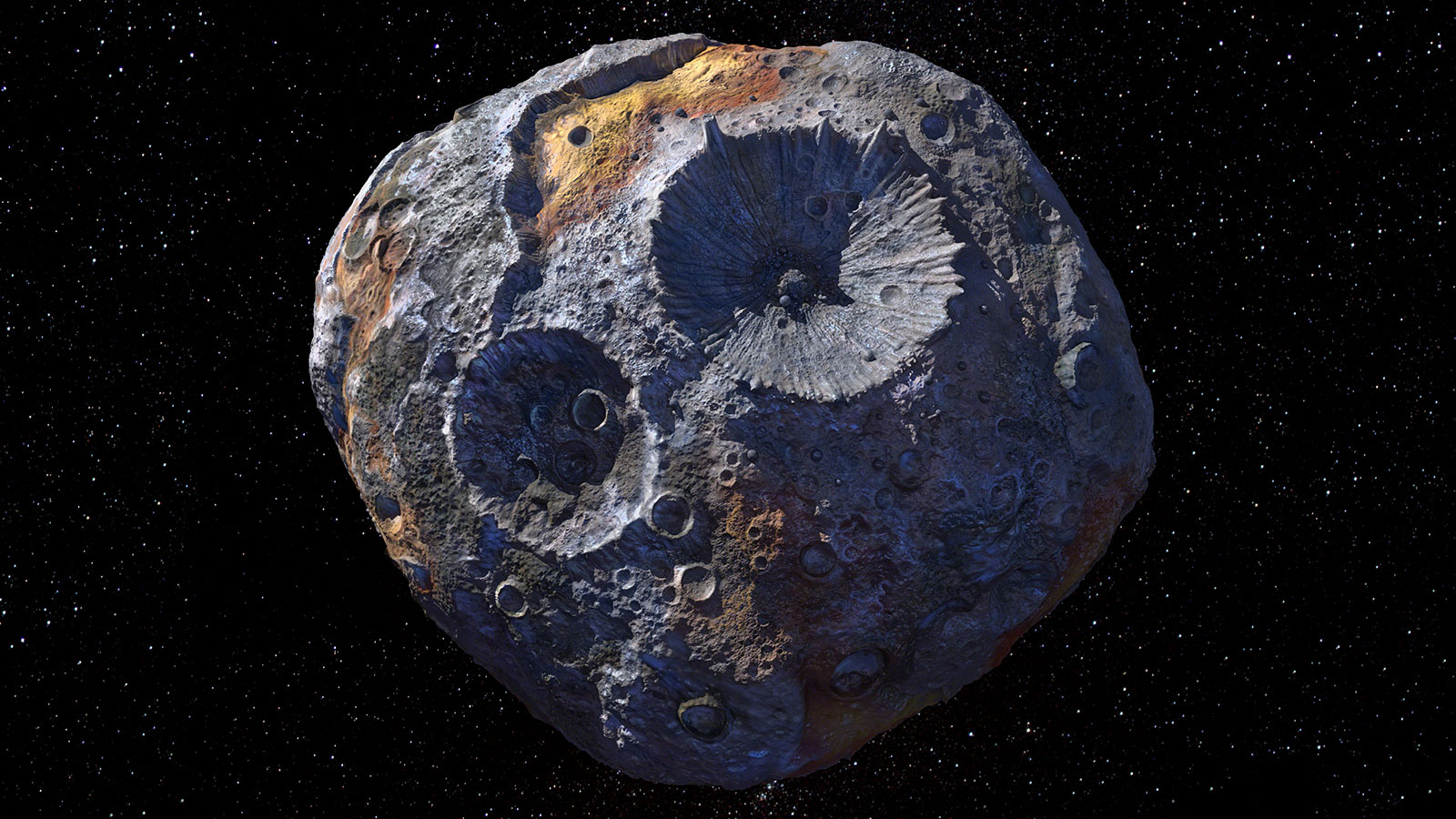Psyche, exploring a metal world
NASA’s mission to study a relic from the birth of our solar system.

The rocky planets of our solar system—Earth, Mercury, Venus, and Mars—formed about 4.6 billion years ago in a violent process. Thousands of protoplanets—baby planets, really—larger than 100 kilometers collided with each other, accreting over a few million years to form the large terrestrial worlds we know today. However, not every aspiring protoplanet made the cut. The 210-kilometer wide asteroid Psyche lying in the main belt between Mars and Jupiter appears to be such a world.
Scientists think Psyche could’ve grown as large as Mars, but its path to planethood was disrupted when another protoplanet—or more of them—smashed into it, ripping off its outer rocky layers and exposing its metallic core. This core cooled over time to form the asteroid it is today, the only such known object in our solar system.
Every large terrestrial body we’ve explored so far is made of rock and/or ice but our Earth-based radar and spectral observations indicate Psyche is either nearly all-metal or a mix of metal and rock, and is either way at least twice as dense as most asteroids.
We can’t dig 3,000 kilometers down to study our Earth’s core—today’s technology allows only a humble 12 kilometers—but we can build spacecraft to visit Psyche, which is exactly what NASA is doing. By studying Psyche’s exposed core, the namesake mission will provide us insights into our own planet’s core, the mantle on top, how they both formed, and the conditions during the birth of our solar system.
How will Psyche study Psyche?
The Psyche spacecraft will launch on a SpaceX Falcon Heavy rocket in 2023 or 2024 and arrive at the asteroid Psyche in 2029 or 2030. It will then enter Psyche’s orbit to systematically study the asteroid for at least 21 months, within which time it will reduce its orbit size at least three times to get closer views than before.

The Psyche spacecraft has a pair of high-resolution cameras to show us what Psyche really looks like. The cameras have many spectral filters to distinctly identify both metals and rocks on Psyche’s surface. The spacecraft also has a gamma ray and neutron spectrometer (GRNS) to help us identify specific elements in metals, such as iron and nickel, and in any rocks on Psyche.
Scientists also suspect Psyche was spewing volcanoes of iron during its active youth. The spacecraft’s camera and GRNS will thus look for hints of volcanic vents and volcanic materials on Psyche’s surface. If confirmed, things can’t get any more metal than that.
How will we know if Psyche really is an early core of a planet-to-be?
Based on how much iron and nickel the spacecraft detects on or just below Psyche’s surface, we’ll know how likely it is to be an exposed protoplanetary core. And based on which elements make up Psyche’s rocks, we can tell if the rocks were part of the collision-ripped mantle on top of Psyche’s early core or are simply rocks delivered by later asteroid impacts.
The spacecraft will also measure Psyche’s gravity field. As the spacecraft passes over denser and rarer regions of Psyche, its position and velocity will be impacted by the changes in gravity. The radio communications instrument onboard will note these finer movements of the spacecraft, allowing scientists to infer Psyche’s gravity field and peek into its interior. This is how we’ll know if Psyche is a dense whole body reminiscent of a core or a hollow rubble-pile like many asteroids.

If data from these three instruments tell us that Psyche’s rocks are thoroughly mixed with its metals, it’s likely not a core and is instead a leftover primitive body from the solar system’s birth just like asteroids and comets. However, if Psyche has large swaths of rocks on it, they might be leftover slabs from the lost mantle.
In any case, if Psyche was a liquid iron core, it might have churned to produce a strong magnetic field like Earth’s core. While Psyche isn’t expected to have a magnetic field today, the once strong field might have imprinted its magnetic signatures in Psyche’s rocks and metals. The last of the Psyche spacecraft’s instruments, a magnetometer, will measure such remnant magnetic fields on Psyche, which would be good evidence for it being a protoplanetary core.
Creating craters of metal
To get an idea of what craters would look like on Psyche, scientists created little metallic craters of their own. At NASA’s Ames Vertical Gun Range facility, technicians shot small, spherical iron-nickel meteorites—yes, the real deal—on metal blocks at various angles with high velocities up to 7 kilometers per second to mimic impacts on Psyche. This gave scientists insights on how craters would form very differently on metallic worlds compared to rocky ones, and that they should expect Psyche’s craters to have rugged interiors, and razor-sharp rims with tall protrusions.
Explore new worlds and test new technologies
For NASA, Psyche is a Discovery-class mission selected along with Lucy in 2017. Such missions are developed faster and cost less than NASA’s flagship ones such as Perseverance. Previous missions of this class include InSight, Dawn, and MESSENGER. Since Psyche’s mission selection, NASA has been designing, prototyping, and extensively testing models of the spacecraft, its parts and instruments. The agency began assembling the flight model in 2021.
The Psyche spacecraft also has two technological innovations NASA hopes to use in future missions. The first is a laser communications system, which will allow Psyche to transmit 10 to 100 times more data than traditional radio systems, and the second is an efficient Hall-effect based solar-electric propulsion system, instead of the usual chemical one, that will be used for the first time beyond the Moon.

Psyche’s mission costs about $950 million, including the $850 million for the mission development, operations, and science, and roughly $100 million cost for launch. People often think space exploration is a costly endeavor, and a nearly billion dollar mission does lend such an impression. But when you place the mission in context, say with the same amount of money Google makes in 2 days, getting a direct peek into conditions during the birth of our solar system sounds like a bargain.
Originally published at The Planetary Society.
Like what you read? Support me to keep me going.
